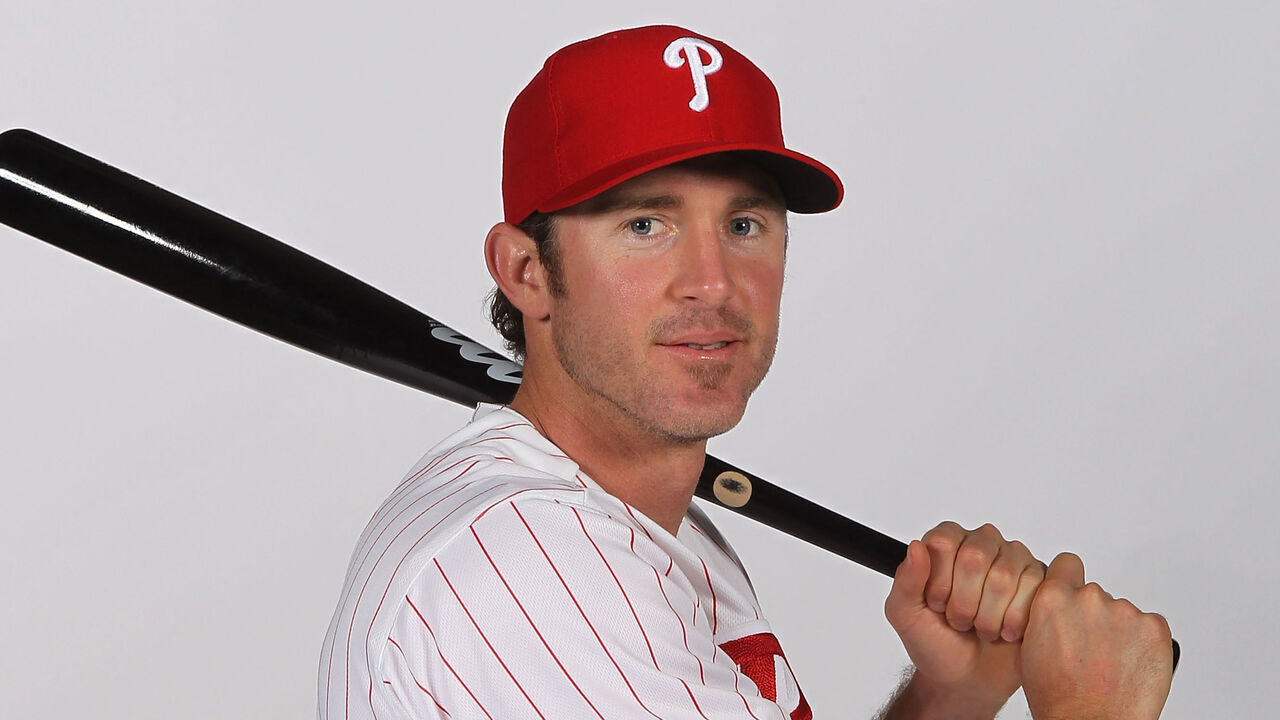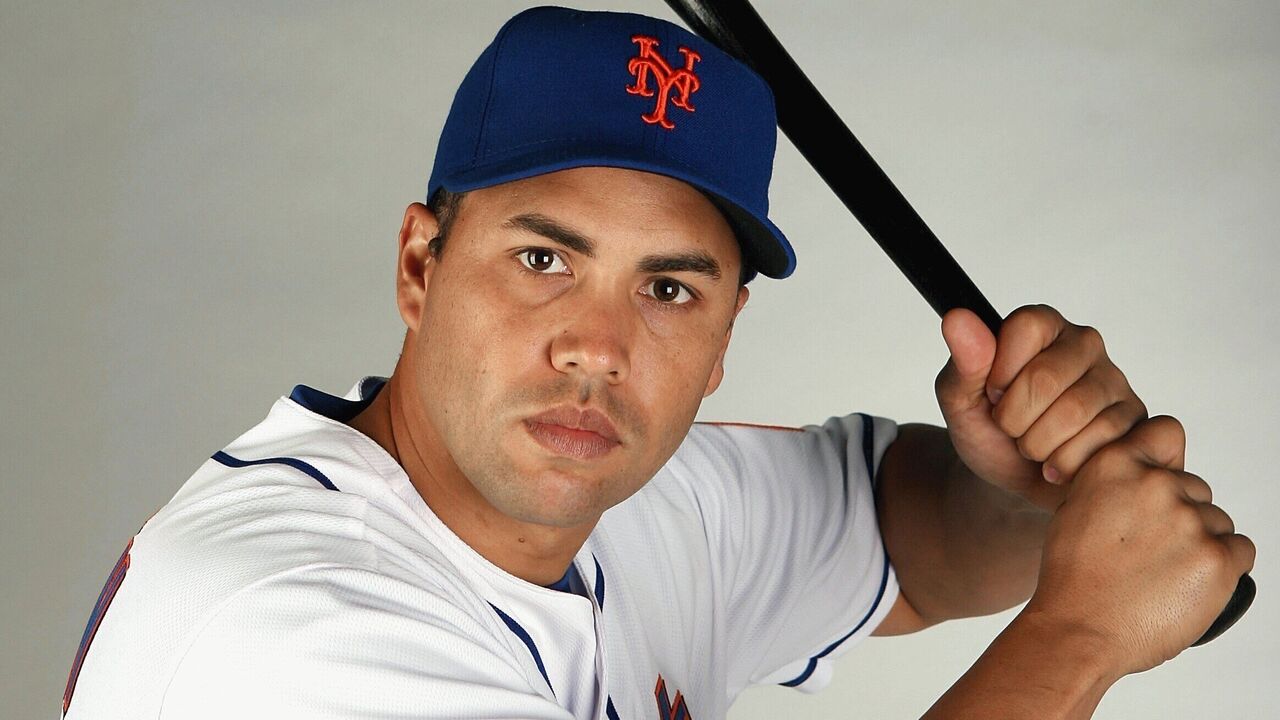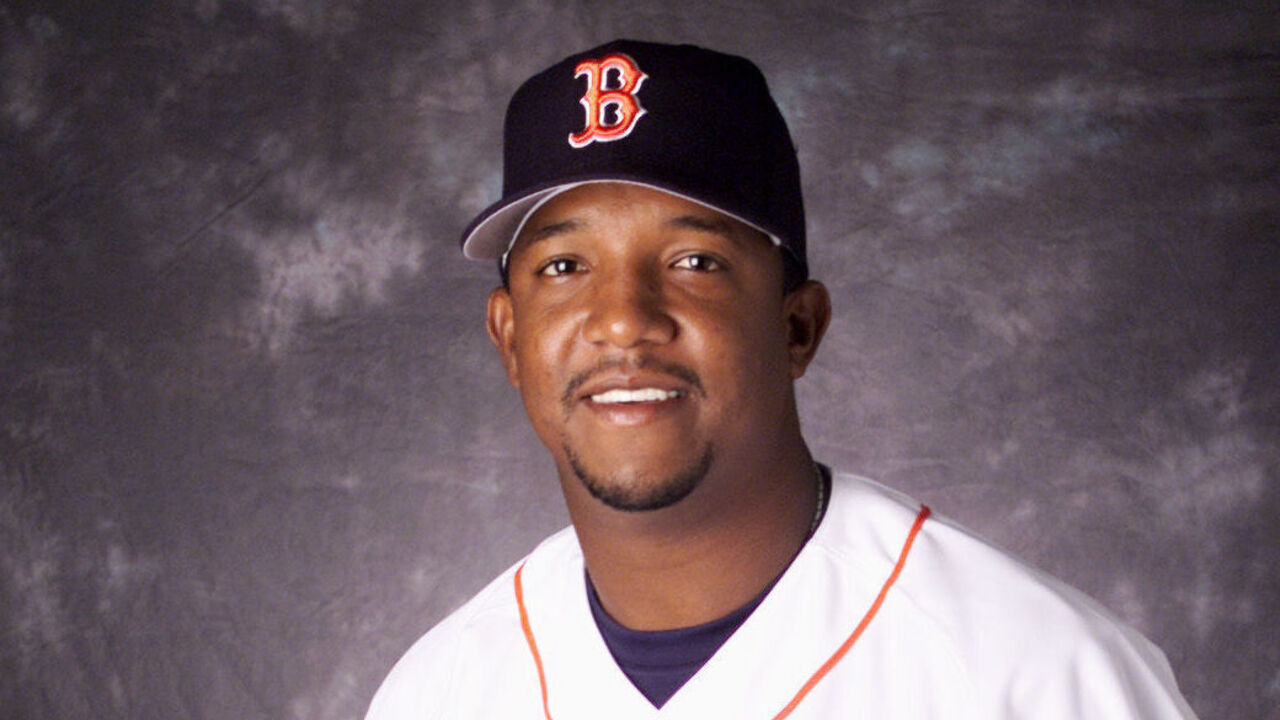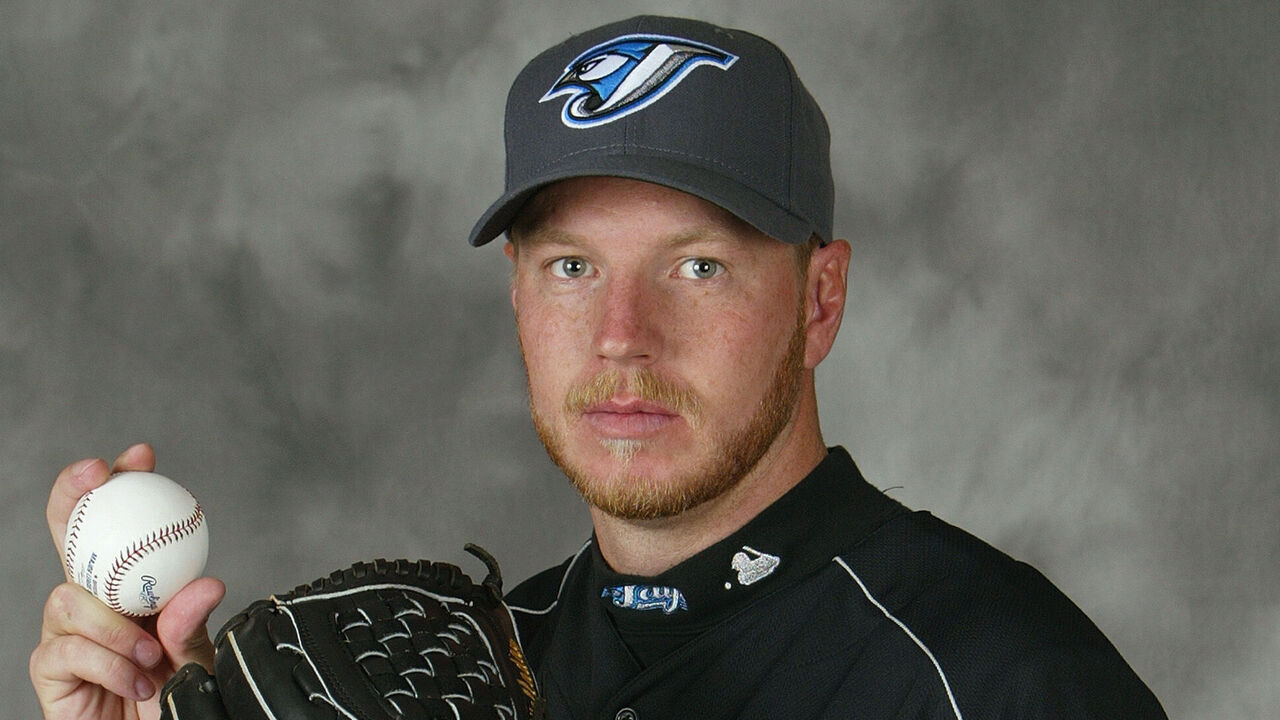25-man roster: The players ranked 11-15 in the last 25 years
There have been 25 MLB seasons since Mark McGwire and Sammy Sosa's home run chase in the summer of 1998, which captivated fans but ultimately led to questions that ended the steroids era.
The game has changed a lot since Roger Maris' single-season home run record fell, from testing for performance-enhancing drugs to the industry's entry into the data age. In 1998, there were a lot of home runs, but there was no PITCHf/x, no Statcast, and no FanGraphs.
theScore's baseball writer Travis Sawchik is using that consequential season as a frame in which to rank and discuss the top 25 players of the last 25 years.
Remember, the accomplishments and performance considered for each player cover only the 25 years in question. For example, Barry Bonds is the most dominant hitter since Ted Williams, but the last quarter century only covers the latter portion of his career.
Monday: Introductory essay and players 21-25
Tuesday: Players 16-20
15. Chase Utley

Era teams: Philadelphia Phillies 2003-15, Los Angeles Dodgers 2015-18
Signature performance: Utley often rose to the moment. His first career hit was a grand slam. In his first plate appearances of the 2008 World Series - which the Phillies won - he smashed a two-run homer, perhaps removing some nerves from a team and fan base that hadn't won a major title in any sport since the 1983 Sixers. But his signature performance came in the World Series the next season, when he hit five homers - tying the Fall Classic record established by Reggie Jackson in 1977. Utley is Philadelphia's Mr. October.
Why he's here: That Utley enjoys such a lofty ranking might surprise some. He never was awarded an MVP like teammates Jimmy Rollins or Ryan Howard, and those vaunted Phillies teams are perhaps better remembered for their strong rotations. But Utley had one of the best seven-year peaks of any player in MLB history. In fact, only seven second basemen have a superior WAR7 in MLB history to Utley and they're all in the Hall of Fame. Among the players of this era we studied, Utley ranked 10th in combined WAR7, sandwiched between Justin Verlander and Clayton Kershaw.
He was simply a dominant middle-infield force in his peak. From his age 26-31 seasons, he averaged a .298/.388/.523 slash line and 133 OPS+. From 2005-09, he posted at least 7 WAR in each season with his quick, flick-of-the-wrist swing.
For seven years, he hit like an elite corner outfielder but played second base - and played it extremely well, trailing only Mark Ellis in DRS produced at the position (123 runs saved above average) over the last 25 years.
While his era counting numbers are lighter - 259 career homers, for instance - part of that was because he didn't play a full major-league season until age 26, a relatively late emergence.
He was a player who wasn't afraid of the ball - his 204 times being hit ranks ninth in history. He even hung in there when Noah Syndergaard buzzed him with 99 mph in his return to New York in 2016 as payback for breaking Rubén Tejada's leg with what the Mets felt was a dirty slide the previous fall. Some opponents didn't care for Utley.
While that was an ugly and unfortunate slide, he was an excellent baserunner, who played with outstanding instincts. For example, on Aug. 6, 2006, Utley scored all the way from second base on a grounder back to Atlanta Braves pitcher Macay McBride. The late, beloved Phillies announcer Harry Kalas exclaimed of the hustle: "Chase Utley, you are the man!"
Indeed he was the man at second base in this era; he's the only player from the position to make the list.
14. Carlos Beltrán

Era teams: Kansas City Royals 1999-2004; Houston Astros 2004, 2017; New York Mets 2005-11; San Francisco Giants 2011; St. Louis Cardinals 2012-13; New York Yankees 2014-16; Texas Rangers 2016
Signature performance: After arriving in Houston from Kansas City at the 2004 trade deadline, Beltrán was excellent in the regular season to help the Astros reach the postseason. He was even better in October, slashing .435/.536/1.022 in 12 postseason games, and swatting eight home runs to tie Bonds for what was then the postseason record.
Why he's here: He remains tarnished by his pivotal role in the Astros' sign-stealing scandal, an unfortunate decision after cementing a legacy as one of the dominant five-tool performers of the era.
While he never won an MVP, the switch-hitter was great at many things for most of his career. He was tied for 14th in the era with six seasons of 5+ WAR. He was an above-average MLB hitter by OPS+ for 15 of his 19 seasons in the era, in addition to being an elite defender and baserunner.
He ranks seventh in home runs hit in the last quarter century (435) and fifth in stolen bases (309), all while posting a .351 on-base mark. He also won three consecutive Gold Gloves from 2006 to 2008 in center field. Only Michael Bourn and Andruw Jones accumulated more defensive runs saved in center field during the last quarter century.
13. Pedro Martinez

Era teams: Boston Red Sox 1999-2004, Mets 2005-08, Phillies 2009
Signature performance: At the 1999 All-Star Game, in the midst of the greatest regular season of all time for a pitcher, Martinez authored a most remarkable sequence.
He became the first All-Star pitcher to strike out the first three batters of the game: Barry Larkin waved at a breaking ball, Larry Walker stared at a pinpoint 97-mph fastball on the outside corner, and Sosa swinging through a 96-mph fastball. In the second inning, Martinez struck out McGwire swinging, and ended the inning by getting Jeff Bagwell to swing over the top of his signature, fading changeup. It was an exhibition game, but it felt like more than that; it felt like the best pitcher in the world at the height of his powers making the sport's best hitters look like amateurs. He earned All-Star Game MVP honors.
Why he's here: At his peak, there was no right-handed starter more dominant in the era. He combined elite command, velocity, and mastery of both a knee-melting breaking ball and perhaps the era's best changeup. He did this all while generously listed at 5-11 and 170 pounds. His lack of size was one reason the Dodgers traded him to the Montreal Expos for Delino DeShields back in 1993. (Whoops.) Montreal's inability to afford him led to his trade to Boston.
As with Utley, Martinez's case is more tied to a brilliant peak than longevity, given that only 11 of his 18 seasons fit within our era. His combined WAR7 ranks sixth among all players in the era, and second to Randy Johnson among pitchers. By ERA+, Martinez owns five of the top 100 pitching seasons of all time and four came in this era.
From 1999 to 2003, Martinez produced a 2.10 ERA, more than half a run superior to the next starter (Johnson).
Over that five-year run, he averaged 11.6 strikeouts per nine innings against only 1.8 walks.
In his dominant 1999 season, his second in Boston, Martinez produced 11.6 fWAR - the best mark for any pitcher in major-league history. His 291 ERA+ is the best in post-integration history according to Baseball Reference. He was 23-4 with a 2.07 ERA and struck out 313 batters in 213 innings, and captured the AL pitching Triple Crown (wins, ERA, and strikeouts).
While a shoulder injury sapped his velocity and effectiveness in the mid-2000s, and robbed him of an even higher ranking on this list, he still accumulated a 135-54 record in the era and a 2.89 ERA, third best among starters.
Pound for pound, he's quite possibly the best pitcher of all time.
12. Roy Halladay

Era teams: Toronto Blue Jays 1999-2009, Phillies 2010-13
Signature performance: On May 29, 2010, Halladay became the 20th pitcher in MLB history to throw a perfect game, retiring all 27 Marlins he faced. He later bought 60 luxury watches for teammates, coaches, and support staff, engraving each with a message: "We did it together. Thanks, Roy Halladay."
Why he's here: There's no turnaround story like Halladay's on this list. Early in his career, it appeared his time in the majors would be short-lived. He produced a 10.64 ERA in 2000, and the Blue Jays demoted him all the way back to Class-A in 2001 to rebuild himself under the tutelage of minor-league pitching coach Mel Queen. First, they worked on the mental game.
From Halladay's SABR BioProject:
'You're wasting talent, Doc,' was the first thing Queen told Halladay. 'I verbally abused him pretty hard that first week. A lot of guys wouldn't have taken it. A lot of guys would have walked away. A lot of guys would've punched me. I basically told him he wasn't a very intelligent young man. In fact, as far as baseball-wise, I told him he was pretty naive and stupid. And that's got to change.'
Queen and Halladay then worked on the physical. Halladay transformed from an over-the-top, four-seam-fastball pitcher to employing three-quarters motion. His pitch mix changed to one that leaned on sink, cut, and break.
After the reset, from 2002-12, Halladay led the majors in wins (181) and was third in innings. He won Cy Young Awards in both leagues, and led his league in innings four times as one of the era's most prolific workhorses. He remains the last National League pitcher to throw 250 innings in a season.
While he wasn't a dominant strikeout pitcher, Halladay wasn't going to beat himself through free passes, and he was a difficult pitcher to square up for extra-base hits. He had the sixth-lowest walks per nine innings (1.56) mark of any pitcher who threw at least 1,000 innings during that 11-year stretch. He walked only 32 batters in 266 innings during his 2003 AL Cy Young campaign. He also posted the sixth-highest ground-ball rate (55%) of the era; it was an incredibly effective skill.
11. Miguel Cabrera

Era teams: Florida Marlins 2003-07, Detroit Tigers 2008-23
Signature performance: On Oct. 3, 2012, Cabrera clinched the AL Triple Crown, becoming the 16th player to lead either league in batting average, home runs, and RBIs in a single season, and the first to do it since Boston's Carl Yastrzemski in 1967. His .330 average, 44 home runs, and 139 RBIs also earned him the AL MVP award. A nearly identical line in 2013 (.348, 44, 137) got him a second MVP award.
Why he's here: The baseball world knew Cabrera was special early on when he homered off Roger Clemens in the 2003 World Series as a 20-year-old with the Marlins.
By traditional or advanced measures, Cabrera was one of the most dominant offensive performers of the era. He ranks fourth in home runs (511) and second in hits (3,174), surpassing both traditional Hall of Fame benchmarks for hitters. He ranked ninth in WAR.
His 140 OPS+ mark for the era means he was 40% better than a league-average hitter for his entire 21-year career despite a decline in effectiveness in his last seven seasons. He was incredibly consistent at his peak, evidenced by 12 All-Star appearances, one shy of Derek Jeter for the era.
Cabrera blended rare power and contact ability. In Statcast's first year of ball tracking in 2015, he ranked in the 100th percentile in exit velocity (93.6 mph), hard-hit percentage, and expected slugging percentage, all while producing a league-average contact rate.
Cabrera's signature moves were to slash premium velocity to the opposite field for base hits and turn on breaking-ball mistakes for home runs. There was no way to game plan for him.
That Cabrera doesn't rank higher speaks to the era's incredible baseball talent.
Follow the unveiling all week long. Thursday: Nos. 6-10.
Travis Sawchik is theScore's senior baseball writer.
HEADLINES
- Trade grades: Wild instantly become Cup contenders, Canucks score quantity
- Bedard injured in final second vs. Blues on 'freak accident'
- Canucks GM: Hughes trade not because of a culture problem
- Embiid drops season-high 39, leads 76ers past Pacers with Maxey out
- Pistons match NBA record for scoring balance in big win over Hawks